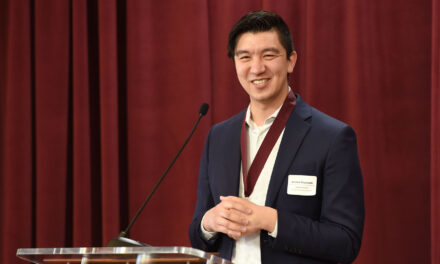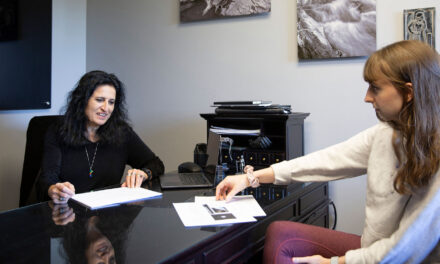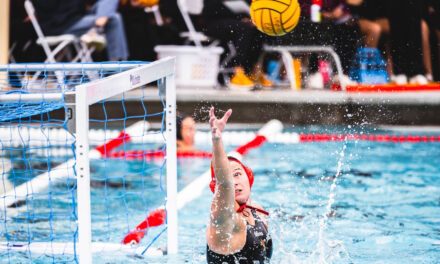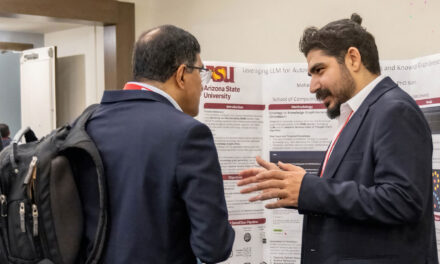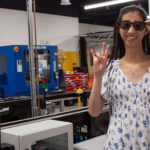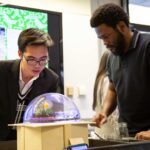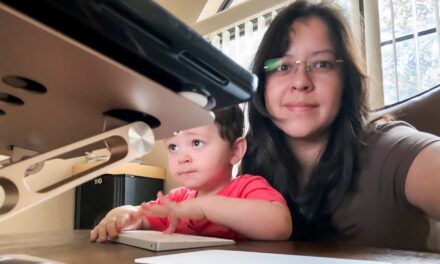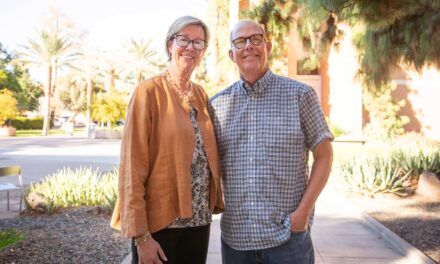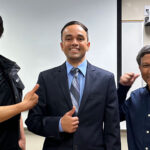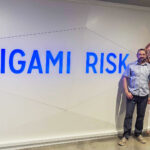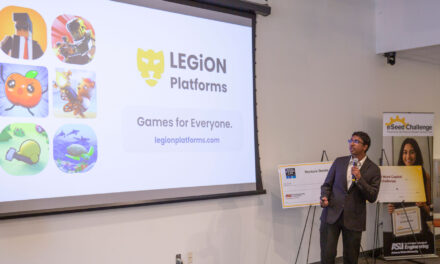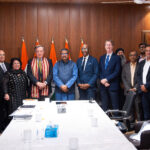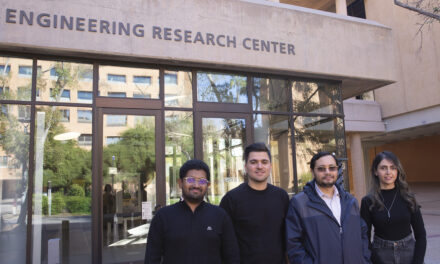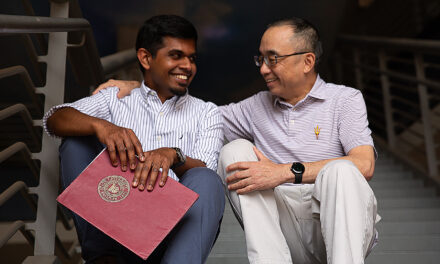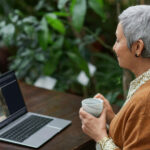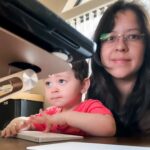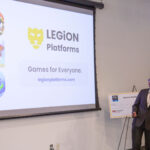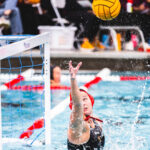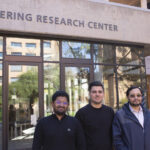
Student engineers take orthopedic startup to international competition
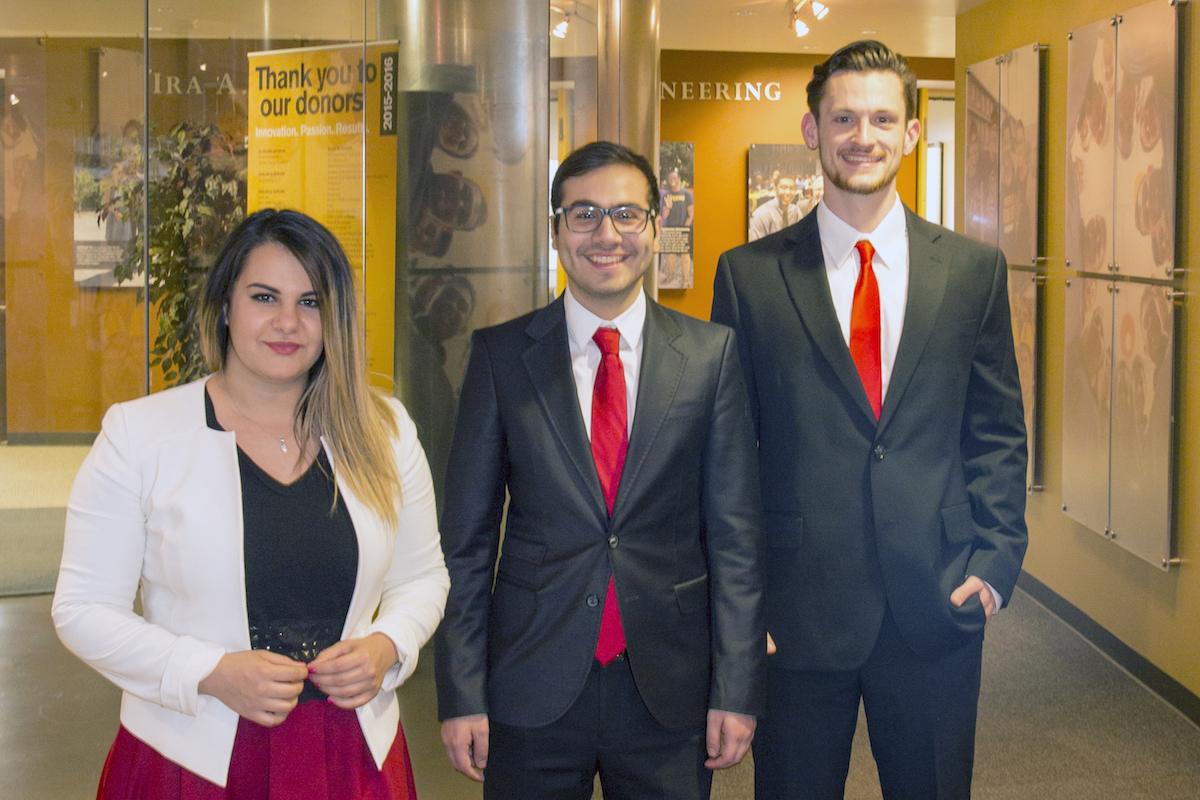
Velia Francis (left), Anthony Zlaket (center) and Nick Vale (right) are designing orthopedic dynamic splints that both prevent and fix hand deformities. The team will represent ASU at the United States National Grand Challenges Summit in Washington, D.C. Photographer: Pete Zrioka/ASU
A team of three biomedical engineering students in the Ira A. Fulton Schools of Engineering has been selected by the National Academy of Engineers as one of 12 finalists to compete at the United States National Grand Challenges Summit in Washington, D.C. in March.
First selected by Arizona State University to be nominated for the competition, the team was then selected by the National Academy of Engineers as one of the top 30 entrants from across the country before being selected as a finalist.
The Grand Challenges Summit occurs once every two years in the U.S., the United Kingdom and China. Teams from all three countries will compete in the finals.
“We are looking forward to the opportunity to meet and learn from fellow entrepreneurs from all over the world,” says senior Anthony Zlaket.
The team’s startup is called Rethro. Their focus is on designing orthopedic dynamic splints that both prevent and fix hand deformities. There are millions of people in the United States who are affected by hand-deforming diseases that not only experience pain and reduced hand functionality, but are often embarrassed by their hand’s aesthetics and do not feel comfortable to go in public. Additionally, the product can be used preventively for people with conditions such as arthritis.
Rethro is a dynamic splint that helps straighten the fingers, and prevents at-risk individuals who do not have hand deformities from developing them. The idea is similar in concept to straightening teeth with dental braces, as Rethro slowly moves a patient’s fingers back to a straight, neutral position with regular wear at night while the patient is asleep.
“Rethro is an innovative product because it uses a solution that provides safety and comfort to the customer,” says senior Velia Francis. “This is unlike the solutions that are currently available on the market, which do not satisfy customers’ needs.”
Anthony Zlaket is the materials science and software expert of the team, Nick Vale is the mechanics and design lead, and Velia Francis is responsible for the control hardware and quality testing of the device.
“Being involved in the entrepreneurial world was one of the most rewarding experiences,” says Zlaket. “We were able to expand our knowledge from product generation to product manufacturing while being able to help people that are at their most vulnerable time.”
The group was initially targeting people with arthritis, but after consulting multiple biomedical engineers and physicians they concluded that their device can be used for many types of flexion-related hand deformities.
“We know a lot of people who are embarrassed by their hand deformities and we noticed that there were limited and painful solutions out there,” senior Nick Vale says. “We are very interested in orthopedics and were motivated to create a medical device that solves an unmet need in this field.”
The team says they will definitely keep working on the project with their goal to be able to manufacture their product to potential customers.


